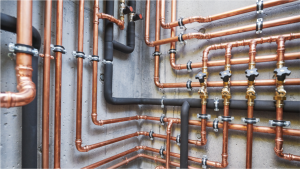Until a few years ago, vehicle manufacturers branded tubeless tires as a premium feature. But nowadays, most new cars and SUVs come with tubeless tyres. However, if you have an older vehicle with tubed tyres and are looking for a tyre replacement, now might be a good time to buy tyres online.
To achieve uniform wear and maximize tread life, tyre rotation should be part of your regular tyre maintenance program. Rotating your tires helps equalize side-to-side and front-to-rear wear rates while improving wear quality and pattern sound. This will ultimately save you money and headaches.
Should I rotate the four tyres simultaneously?
Each wheel position has different tyres, so there will be different wear rates and types of tyre wear. A front-wheel-drive car, for example, will wear tyres differently from a rear-wheel-drive car. A performance vehicle’s tyres will wear faster than a four-door sedan.
Regular tyre maintenance and rotation can make it easier for all four tyres to wear together. The tread depth of a tire is reduced, which allows it to respond more quickly to driver input. This improves vehicle handling and increases the tyre’s cornering ability. You can replace all four of your tyres by wearing them together. This will allow you to keep the original handling balance.
It is important to remember that tyre rotation can’t correct wear issues due to worn parts and incorrect tyre inflation pressures.
Do not forget to bring a spare!
You should include full-size spare tyres in your tyre rotation. These must be of the same construction and size as ground contact tyres. When incorporating a full-size spare tyre into a rotation, you must always adjust the pressure.
As the air is within the tyre, the distribution is more uniform, improving the vehicle’s stability at high speeds. The same cannot be said about tubed tyres as cases of uneven air pressure inside a tube are quite common.
Which pattern should I use?
For the recommended rotation pattern and interval, consult your vehicle manufacturer. If uneven tread wear is evident, rotate your tires every 10,000-12,000 km or sooner, unless stated by the vehicle manufacturer. Ask your service person to correct any wheel alignment or mechanical problem causing uneven tread wear.
Adjust the tyre pressures to suit the manufacturer’s recommendations for the new wheel position. (Specific front and rear tyre pressures might be different).
Note: Don’t reverse the direction of directional tires.









